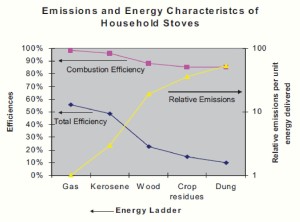Critical Review of the Health Effects of Woodsmoke (75 page pdf, University of California at Berkeley, 2005)
Also discussed here: Wood-burning blamed for poor air in Fairbanks (USA Today, Jan. 14, 2010)
And here: Health Impacts from Particle Pollution (Clean Air Fairbanks, Sept. 21, 2010)

As today’s article under review reports, wood is used as a heating fuel in many parts of the western USA and Canada (and New Zealand) because of its cheap access and need for warmth during the long winters. The health impacts from wood-burning emissions is not as well known and is the focus of the report, noting that between 40 and 90% of winter particulate pollution may be traced back to wood-burning sources.
Key Quotes:
“On winter days when the air is still and Fairbanks area residents fire up their wood stoves and outdoor boilers, Alaska's second-largest city becomes entombed in a shroud of pollution.. due in part to wood stoves and outdoor boilers that belch out small particles, forcing residents to breathe some of the unhealthiest air in the nation”
“In 2006, the Environmental Protection Agency cut the acceptable level of particulates nearly in half, from 65 micrograms per cubic meter to 35 micrograms. From late December to early January, Fairbanks exceeded the limit for particulates on 11 consecutive days.”
“because of wood availabilities, Finland, Sweden, and Canada burn more biomass fuel per capita than other countries.. In Canada, such fuels increased at about 2.4% annually during the 1990s, more than half again as fast as overall energy demand”
“At least 26 hazardous air pollutants are known to be present in woodsmoke.. The main gaseous pollutants in woodsmoke, such as carbon monoxide and nitrogen oxides, add to the atmospheric levels of these regulated gases coming from other combustion sources and thus have always been regulated alike with them”
“Woodsmoke particles are generally smaller than 1 μm, with a peak in the size distribution between 0.15 and 0.4 μm.. Particles in this size range are not easily removed by gravitational settling and therefore can be transported over long distances”
“Residential wood burning is common in the Western US and Canada ..data from San Jose [172], which indicates that 42% of the PM10 during winter months could be attributed to wood burning.. Christchurch, New Zealand is another city impacted by woodsmoke. It is estimated that more than 90% of particulate matter (PM) air pollution is emitted from wood burners and open fires during winter”
Related articles by Zemanta
- Burning Wood May Do More Harm Than Good (treehugger.com)
- Pellet Heat Gaining Traction as Viable Renewable Home Energy (prweb.com)
- US Gives $50 Million for Clean Burning Stoves in Developing World (inhabitat.com)
- Is it healthier to burn coal or wood in your home? (greenanswers.com)


No comments:
Post a Comment